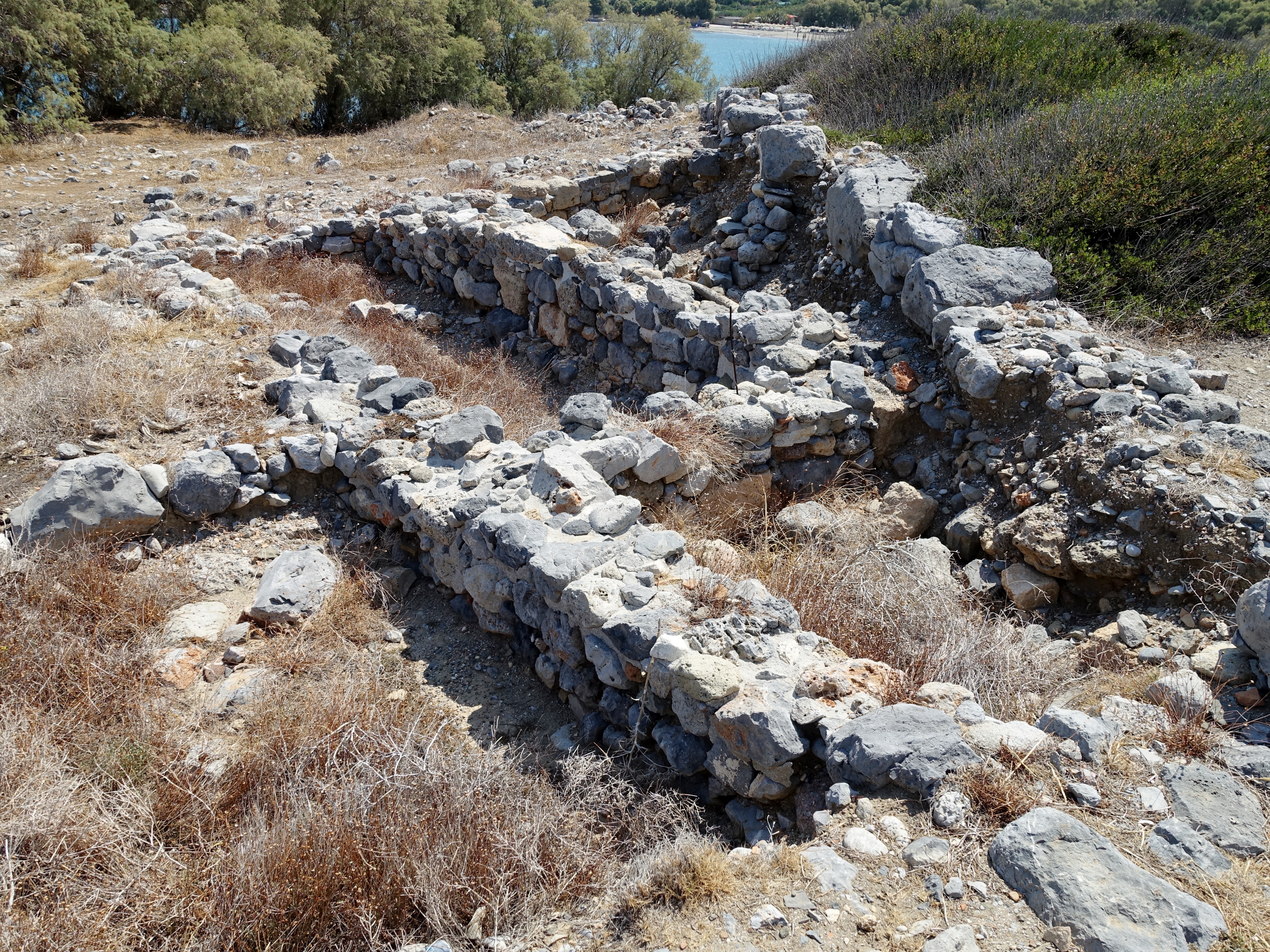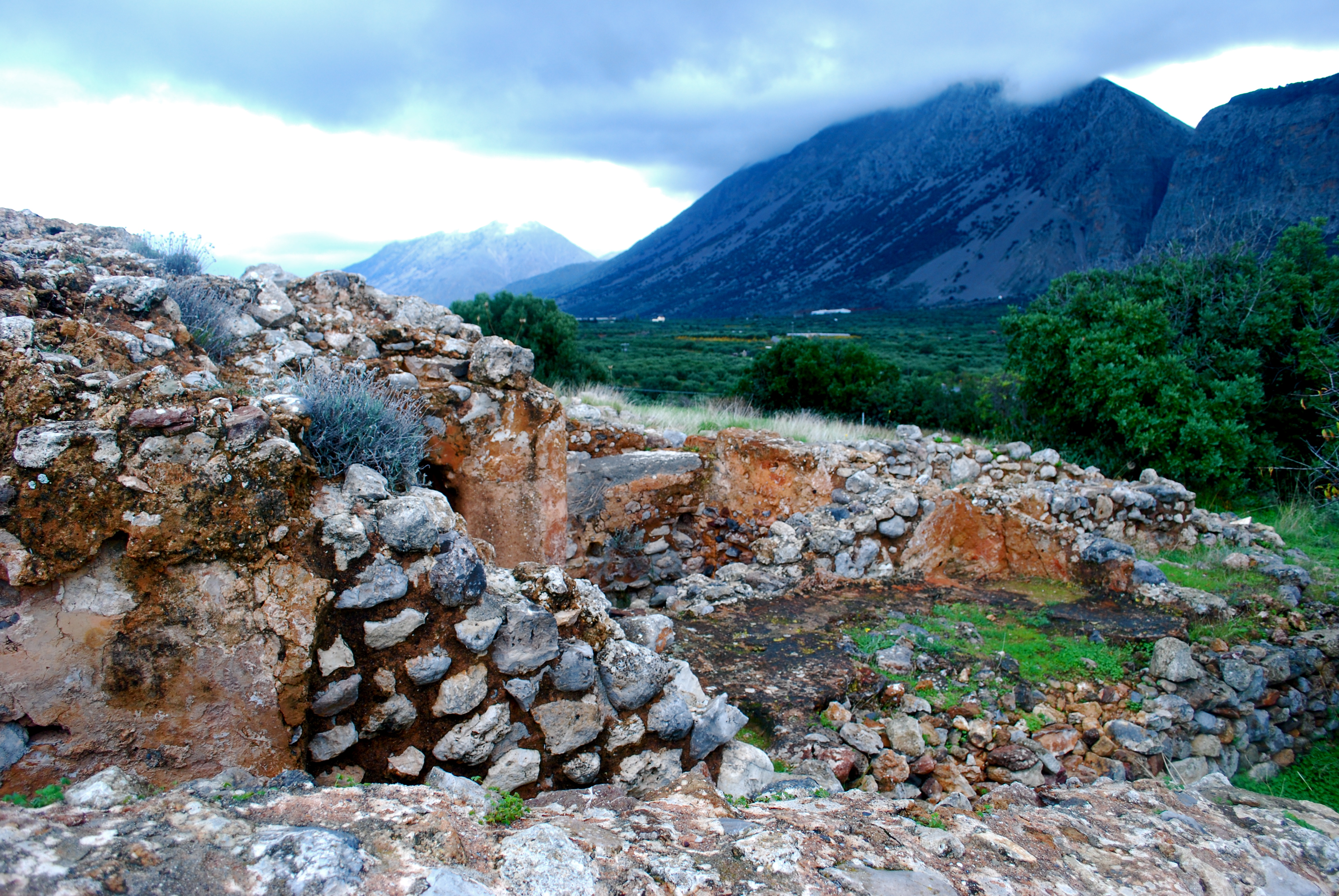|
Kalo Chorio, Lasithi
Kalo Chorio ( el, Καλό Χωρίο, "good village") is a village in the municipality of Agios Nikolaos, Crete, Agios Nikolaos, Lasithi, Crete, Greece. Kalo Chorio village has a population of around 900, nestled attractively in the midst of a verdant hilly landscape, where olive groves, abundant and colorful mediterranean shrubs and plants reach all the way down to the sea. Over the past years, naturally with tourism, part of the village has grown nearer to the beach. Istro has many archaeological points of interest. The new village of Istro sits on the site of the ancient town of Istron, remains of which are still being uncovered to date. Because of this, the land closest to the sea has a conservation order and no new building may take place, which leaves the beaches uncrowded and unspoiled. The delightful beaches of Istro Bay are regularly awarded a Blue flag for cleanliness. Kalo Chorio offers a village atmosphere away from the sprawling concrete covered resorts usually found i ... [...More Info...] [...Related Items...] OR: [Wikipedia] [Google] [Baidu] |
Crete
Crete ( el, Κρήτη, translit=, Modern: , Ancient: ) is the largest and most populous of the Greek islands, the 88th largest island in the world and the fifth largest island in the Mediterranean Sea, after Sicily, Sardinia, Cyprus, and Corsica. Crete rests about south of the Greek mainland, and about southwest of Anatolia. Crete has an area of and a coastline of 1,046 km (650 mi). It bounds the southern border of the Aegean Sea, with the Sea of Crete (or North Cretan Sea) to the north and the Libyan Sea (or South Cretan Sea) to the south. Crete and a number of islands and islets that surround it constitute the Region of Crete ( el, Περιφέρεια Κρήτης, links=no), which is the southernmost of the 13 top-level administrative units of Greece, and the fifth most populous of Greece's regions. Its capital and largest city is Heraklion, on the north shore of the island. , the region had a population of 636,504. The Dodecanese are located to the no ... [...More Info...] [...Related Items...] OR: [Wikipedia] [Google] [Baidu] |
Lasithi
Lasithi ( el, Λασίθι) is the easternmost regional unit on the island of Crete, to the east of Heraklion. Its capital is Agios Nikolaos, the other major towns being Ierapetra and Sitia. The mountains include the Dikti in the west and the Thrypti in the east. The Sea of Crete lies to the north and the Libyan Sea to the south. To the east of the village of Elounda lies the island of Spinalonga, formerly a Venetian fortress and a leper colony. On the foot of Mount Dikti lies the Lasithi Plateau, famous for its windmills. Vai is well known for its datepalm forest. Thanks to its beaches and its mild climate year-long, Lasithi attracts many tourists. Mass tourism is served by places like Vai, Agios Nikolaos and the island of Chrissi. More off-beat tourism can be found in villages on the south coast like Myrtos, Makrys Gialos or Makrigialos, Xerokambos and Koutsouras. Lasithi is home to a number of ancient remains. Vasiliki, Fournou Korifi, Pyrgos, Zakros and Gournia are ruin ... [...More Info...] [...Related Items...] OR: [Wikipedia] [Google] [Baidu] |
Agios Nikolaos, Crete
Agios Nikolaos, Hagios Nikolaos or Aghios Nikolaos ( el, Άγιος Νικόλαος ) is a coastal town on the Greek island of Crete, lying east of the island's capital Heraklion, north of the town of Ierapetra and west of the town of Sitia. In the year 2011, the Municipality of Agios Nikolaos, which takes in part of the surrounding villages, claimed 27,074 inhabitants. The town is a municipality of the Crete region and sits partially upon the ruins of the ancient city of Lato pros Kamara. History Agios Nikolaos was settled in the late Bronze Age by Dorian occupants of Lato, at a time when the security of the Lato hillfort became a lesser concern and easy access to the harbour at Agios Nikolaos became more important. The name Agios Nikolaos means ''Saint Nicholas''. Its stress lies on the second syllable of the word "Nikolaos". ''Agios Nikolaos'' or ''Ayios Nikolaos'' (alternative romanizations of the Greek ) is a common placename in Greece and Cyprus, since Saint Nicholas is t ... [...More Info...] [...Related Items...] OR: [Wikipedia] [Google] [Baidu] |
Greece
Greece,, or , romanized: ', officially the Hellenic Republic, is a country in Southeast Europe. It is situated on the southern tip of the Balkans, and is located at the crossroads of Europe, Asia, and Africa. Greece shares land borders with Albania to the northwest, North Macedonia and Bulgaria to the north, and Turkey to the northeast. The Aegean Sea lies to the east of the Geography of Greece, mainland, the Ionian Sea to the west, and the Sea of Crete and the Mediterranean Sea to the south. Greece has the longest coastline on the Mediterranean Basin, featuring List of islands of Greece, thousands of islands. The country consists of nine Geographic regions of Greece, traditional geographic regions, and has a population of approximately 10.4 million. Athens is the nation's capital and List of cities and towns in Greece, largest city, followed by Thessaloniki and Patras. Greece is considered the cradle of Western culture, Western civilization, being the birthplace of Athenian ... [...More Info...] [...Related Items...] OR: [Wikipedia] [Google] [Baidu] |
Istron
Istron ( grc, Ἴστρων) was a town of ancient Crete. Istron is mentioned in a list of Cretan cities cited in a decree of Cnossus from about 259-233 BCE, as well as in the list of Cretan cities that signed an alliance with Eumenes II of Pergamon in the year 183 BCE. The site of Istron is located near modern Priniatikos Pyrgos. References Populated places in ancient Crete Former populated places in Greece Cretan city-states {{AncientCrete-geo-stub ... [...More Info...] [...Related Items...] OR: [Wikipedia] [Google] [Baidu] |
Ex-pat
An expatriate (often shortened to expat) is a person who resides outside their native country. In common usage, the term often refers to educated professionals, skilled workers, or artists taking positions outside their home country, either independently or sent abroad by their employers. However, the term 'expatriate' is also used for retirees and others who have chosen to live outside their native country. Historically, it has also referred to exiles. Expatriates are immigrants or emigrants who maintain cultural ties such as the language of their country of origin. Etymology The word ''expatriate'' comes from the Latin terms '' ex'' ("out of") and ''patria'' ("native country, fatherland"). Semantics Dictionary definitions for the current meaning of the word include: :Expatriate: :* 'A person who lives outside their native country' (Oxford), or :* 'living in a foreign land' (Webster's). These definitions contrast with those of other words with a similar meaning, such as ... [...More Info...] [...Related Items...] OR: [Wikipedia] [Google] [Baidu] |
Mediterranean
The Mediterranean Sea is a sea connected to the Atlantic Ocean, surrounded by the Mediterranean Basin and almost completely enclosed by land: on the north by Western and Southern Europe and Anatolia, on the south by North Africa, and on the east by the Levant. The Sea has played a central role in the history of Western civilization. Geological evidence indicates that around 5.9 million years ago, the Mediterranean was cut off from the Atlantic and was partly or completely desiccated over a period of some 600,000 years during the Messinian salinity crisis before being refilled by the Zanclean flood about 5.3 million years ago. The Mediterranean Sea covers an area of about , representing 0.7% of the global ocean surface, but its connection to the Atlantic via the Strait of Gibraltar—the narrow strait that connects the Atlantic Ocean to the Mediterranean Sea and separates the Iberian Peninsula in Europe from Morocco in Africa—is only wide. The Mediterranean Sea ... [...More Info...] [...Related Items...] OR: [Wikipedia] [Google] [Baidu] |
Priniatikos Pyrgos
Priniatikos Pyrgos is an archaeological site near Istron River, in the eastern Cretan regional unit of Lasithi, (Greece). The nearest big town is Agios Nikolaos, Crete. The site is on a coastal promontory. It appears to have been first settled in the Final Neolithic, ''circa'' 3000 BC. Nearby, there's a small resort town of Kalo Chorio, Lasithi. It is not to be confused with Myrtos Pyrgos on the south coast. History Activity on the site continued throughout the Minoan Bronze Age and the Classical Greek (polis-town of Istron) and Roman periods to Byzantine and Venetian periods, spanning a total of up to 4,000 years. The site may have been a harbour settlement, an industrial area, a cult area or any combination of such functions, which may have changed throughout its long occupation. Since 2007, Priniatikos Pyrgos has been undergoing excavation by an international team under the auspices of the Irish Institute of Hellenic Studies at Athens. There's another important archaeol ... [...More Info...] [...Related Items...] OR: [Wikipedia] [Google] [Baidu] |
Vrokastro
Vrokastro was an ancient Minoan civilization settlement in the Lasithi regional unit of eastern Crete, Greece. It overlooks the Gulf of Mirabello. The site was a mountain citadel located on a hill 1,5 km east of Priniatikos Pyrgos, another very early archaeological site. Nearby, there's a small resort town of Kalo Chorio, Lasithi. Yet another important archaeological site in the area is Vasiliki, Lasithi. There's an Archaeological Museum in nearby Agios Nikolaos, Crete. History Vrokastro bridges the end of the Bronze Age and the beginning of the early Iron Age. It was first inhabited during the Middle Minoan period (ca. 2100 to 1700), then reoccupied at the end of the Bronze Age (ca. 1250 B.C.), and continuously inhabited until the seventh century B.C. Archaeology In 1910-1912, American archaeologist Edith Hall Dohan, of the University of Pennsylvania Museum excavated here the ruins of a Minoan period settlement. She uncovered a Middle Minoan and Early Iron Age settlement ... [...More Info...] [...Related Items...] OR: [Wikipedia] [Google] [Baidu] |
Vasiliki, Lasithi
Vasiliki is the name of a village in the municipality of Ierapetra, in the prefecture of Lasithi, on Crete, and the name of the nearby Minoan archeological site. The site took its name from the village. Geography Vasiliki lies on a small hill in the north of the Ierapetra isthmus. It is located about 2 km inland from the north coast of Crete and the Mirabello Bay. The nearby archaeological site of Priniatikos Pyrgos is about 7 km to the north-west. The exit of the impressive Ha Gorge is located nearby. Archaeology Vasiliki was first excavated 1903-1906 by American archaeologist R. B. Seager. Nicolas Platon continued excavations in 1953. In 1970, A. A. Zois began meticulous work that lasted until 1982, and returned to the site again in 1990 to continue the work. The Minoan village was in use from EMIIA to LMIA. The first structures were constructed during EM IIA period. These buildings were destroyed and new buildings went up during EM IIB. From about 2500 BC onw ... [...More Info...] [...Related Items...] OR: [Wikipedia] [Google] [Baidu] |




